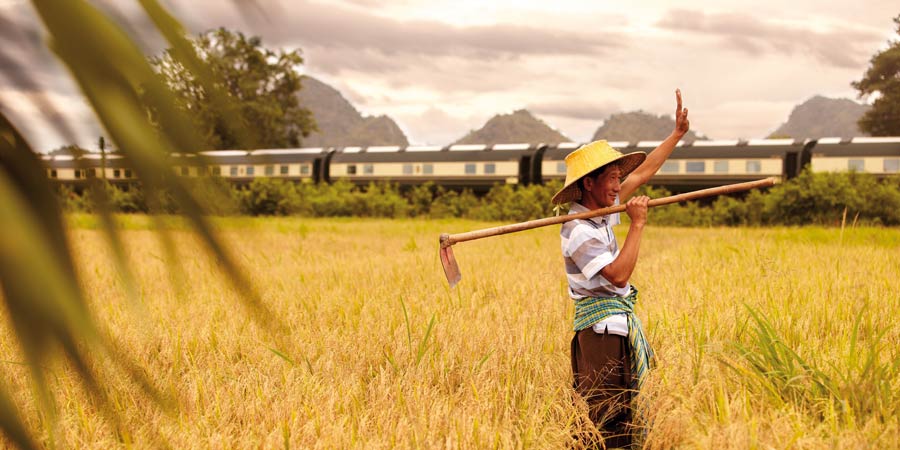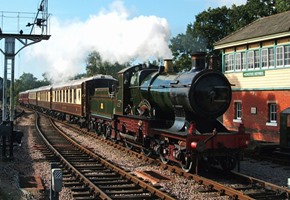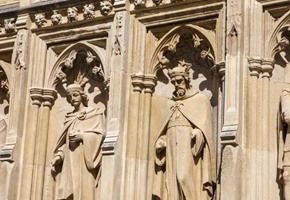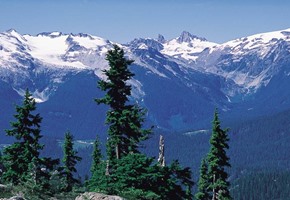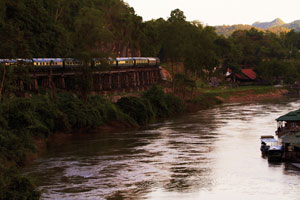
Owned by the same company that runs the Venice Simplon-Orient-Express, this eastern branch runs the 1,250 mile route between Bangkok and Singapore. The route was inspired by the 1938 film, 'The Shanghai Express' and also includes a visit to the Bridge on the River Kwai and the 'Jewel of the Orient', Penang.
The Eastern & Oriental Express runs across Southeast Asia, from Singapore to Bangkok and is one of the most luxurious journeys in the world. The 1,250 mile journey spans three countries and gives travellers a wonderful taste of eastern culture and traditions.
In 1991, the Malaysian and Thai railway companies signed an agreement that allowed the train to travel the entire route. Previously passengers had to change trains to make the complete journey. After the rail companies signed the agreement, a suitable train needed to be found. One was located In New Zealand and shipped in its entirety over to Malaysia. In total, twenty five carriages were shipped over to Singapore. The train was then modified and adapted to better suit the route, upgrade the facilities and ensure the train was as luxurious as possible: and thus the Eastern and Oriental Express was created.
The Eastern & Oriental Express train is the largest passenger train in Southeast Asia, its twenty two carriages (adapted from the original twenty five) cover half a kilometre of tracks. On-board this luxury train there are twenty stewards to assist the guests however they can. The journey crosses three countries and the stewards adapt their uniforms to traditional local dress as the train passes through each country.
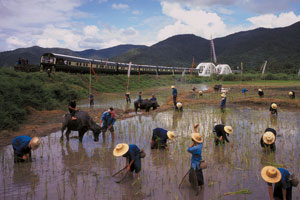
Today there are a number of routes available on the Eastern and Oriental Express. The classic route, inspired by the 1932 film, The Shanghai Express, is the route from Singapore to Bangkok (or vice versa).
The journey begins in Singapore, a city founded in 1819, when a trading post was set up by an Englishman. Today the city is a mix of old and modern, the Eastern & Oriental Express begins its journey from the art deco station building, which is beautifully decorated with mosaics. The eastern orient express was the first train to run straight through from Singapore to Bangkok.
After leaving the bustling city of Singapore, the landscape becomes quaintly rural, the train passes many small 'kampungs' (villages) and acres of rubber plantations. The journey continues into Malaysia across the Straits of Johor, in the evening the train pauses at Kuala Lumpur's beautiful Moorish-style station. Passengers are free to disembark and briefly explore the area, while their cabins are transformed into the bedrooms for the night.
Along the route the train makes short stops, these are to ensure the luxury train stays in optimum condition, and so the on-board chef can collect the freshly ordered food for the evening meals. The train's windows are washed at each stop so passengers are certain to get the best view of the beautiful landscapes they pass.
After Singapore the first excursion stop is Butterworth, where previously passengers had to change trains to get to Bangkok. Upon arrival in Butterworth passengers exit the train and make the short journey to Penang. A guided introductory tour includes beautiful temples, colourful bazaars and tastes of the local culture.
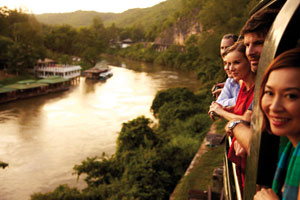
The Eastern and Oriental Express continues north through Malaysia, towards the peninsular known locally as the 'elephants trunk'. Here the views are magnificent, and passengers are encouraged to make full use of the open observation car.
The train then heads towards Thailand. Unlike almost every other Asiatic country, Thailand was never colonised, which gives the land its unique character. Thailand is an extremely beautiful country and travelling at a luxury pace on the Eastern & Oriental Express, through its rolling green scenery, is one of the most amazing ways to see the country.
Arriving in Bangkok the train crosses the Chao PhrayaRiver (the River of Kings). Bangkok is sometimes called 'The Venice of the North', due to the many tributaries of the river of kings. The Eastern and Oriental Express terminates at Bangkok, but for interested passengers a journey a little further north is available, to the bridge over the River Kwai.
Heading towards the River Kwai the train crosses open fields and then heads into mountainous jungle. The carriages pass over the notorious 'Death Railway', built in the Second World War by the Japanese. More than three hundred thousand prisoners of war were imported by the Japanese for the railway line's construction. The line leads to the bridge over the River Kwai, the plight of the prisoners who built the bridge was made famous by the 1957 film of the same name.
The final stop on the journey is Thailand's former capital, Ayutthaya. This beautiful city was twice colonised by the Burmese, Thai people moved away and the city lost its title of capital city. The many temples in Ayutthaya although in ruins, are still stunningly beautiful.
A journey on the Eastern and Oriental Express will stay with you for a life time. The absolute luxury of the train and the beauty of the landscapes it passes through, make this truly one of the world's great train journeys.

